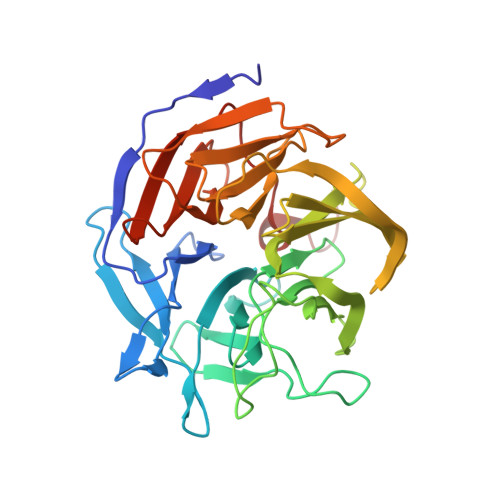Reversed enantioselectivity of diisopropyl fluorophosphatase against organophosphorus nerve agents by rational design
Melzer, M., Chen, J.C., Heidenreich, A., Gab, J., Koller, M., Kehe, K., Blum, M.M.(2009) J Am Chem Soc 131: 17226-17232
- PubMed: 19894712
- DOI: https://doi.org/10.1021/ja905444g
- Primary Citation of Related Structures:
3HLH, 3HLI - PubMed Abstract:
Diisopropyl fluorophosphatase (DFPase) from Loligo vulgaris is an efficient and robust biocatalyst for the hydrolysis of a range of highly toxic organophosphorus compounds including the nerve agents sarin, soman, and cyclosarin. In contrast to the substrate diisopropyl fluorophosphate (DFP) the nerve agents possess an asymmetric phosphorus atom, which leads to pairs of enantiomers that display markedly different toxicities. Wild-type DFPase prefers the less toxic stereoisomers of the substrates which leads to slower detoxification despite rapid hydrolysis. Enzyme engineering efforts based on rational design yielded two quadruple enzyme mutants with reversed enantioselectivity and overall enhanced activity against tested nerve agents. The reversed stereochemical preference is explained through modeling studies and the crystal structures of the two mutants. Using the engineered mutants in combination with wild-type DFPase leads to significantly enhanced activity and detoxification, which is especially important for personal decontamination. Our findings may also be of relevance for the structurally related enzyme human paraoxonase (PON), which is of considerable interest as a potential catalytic in vivo scavenger in case of organophosphorus poisoning.
Organizational Affiliation:
Blum-Scientific Services, Ledererstrasse 23, 80331 Munich, Germany.















